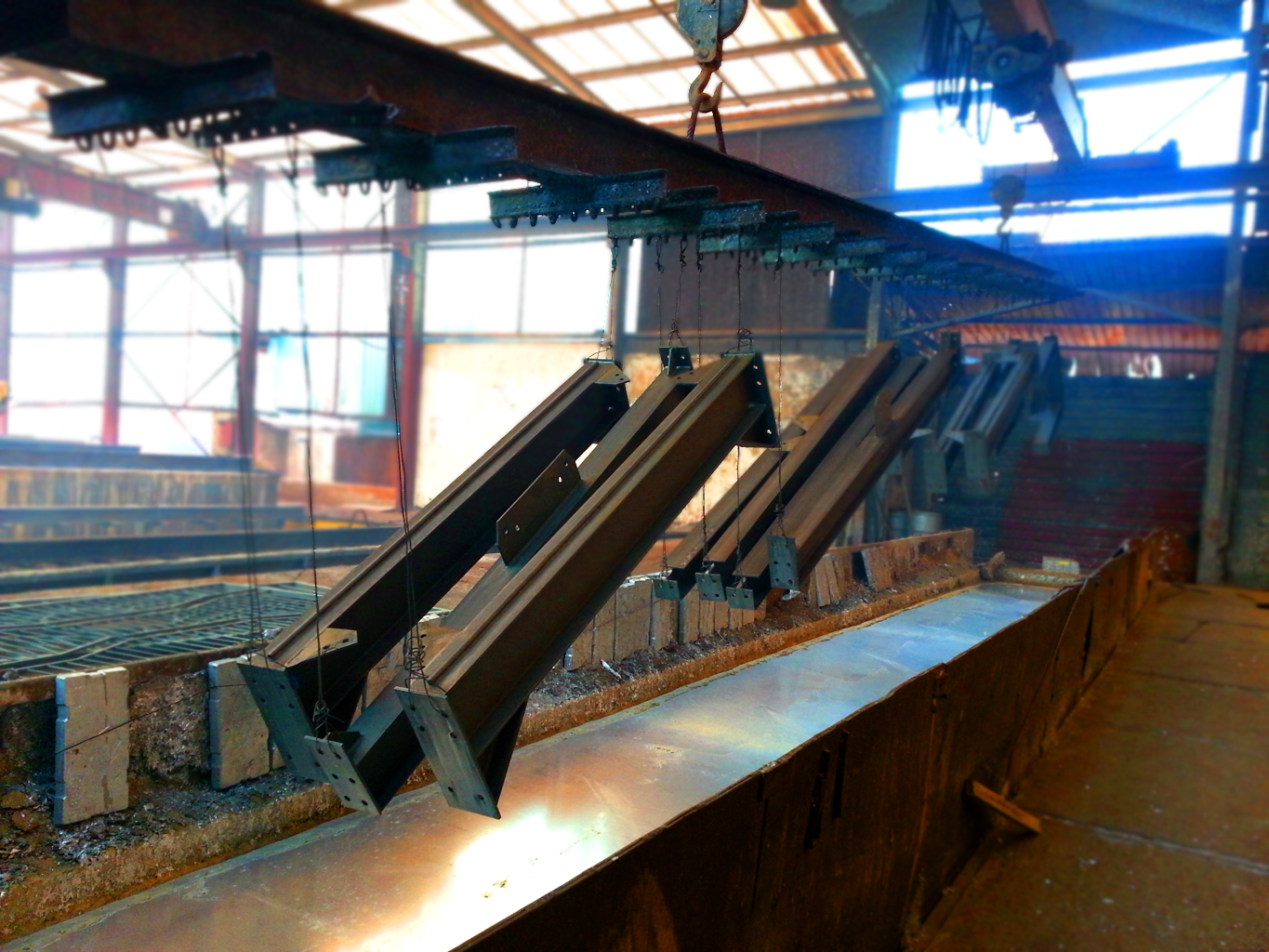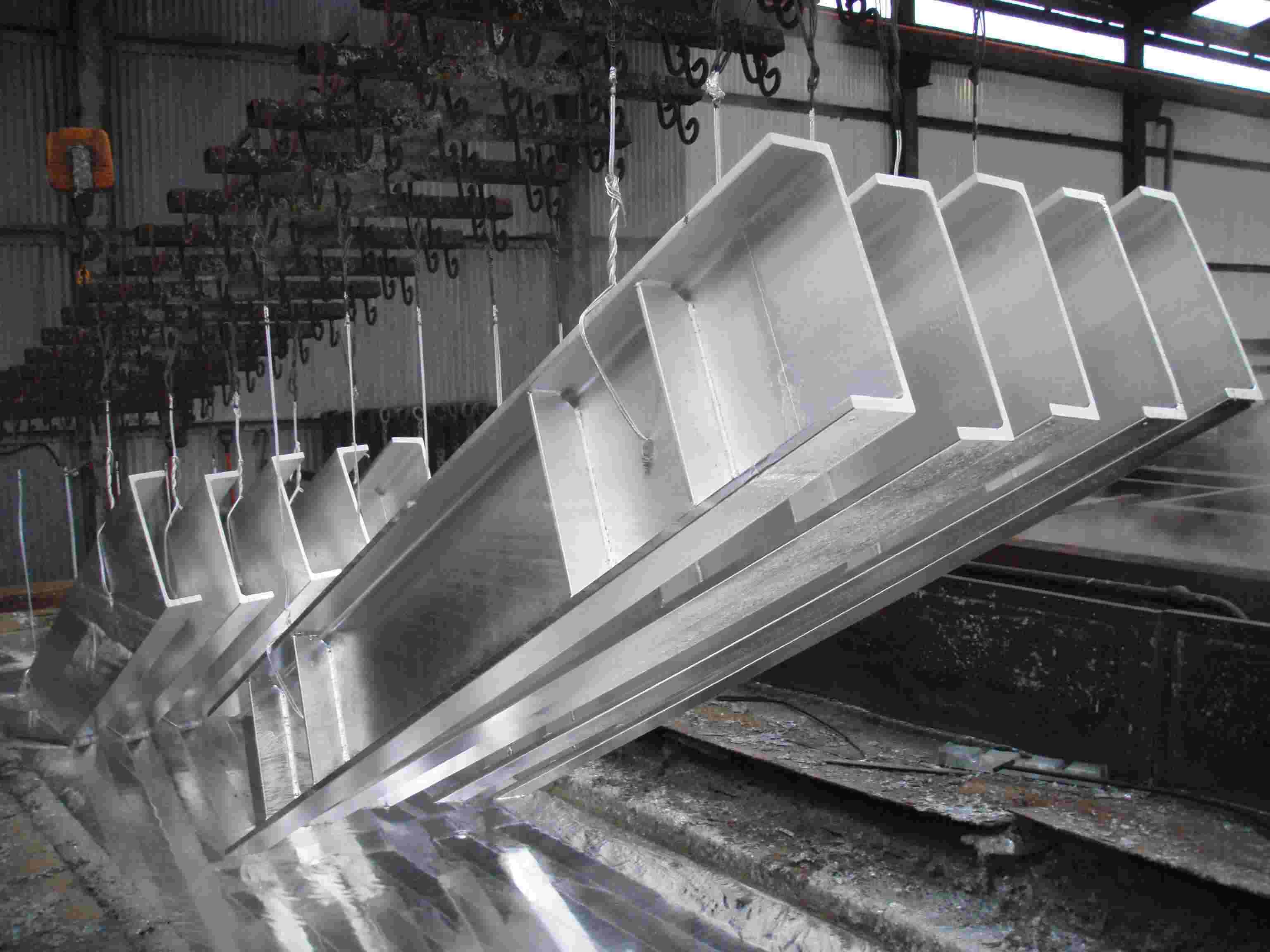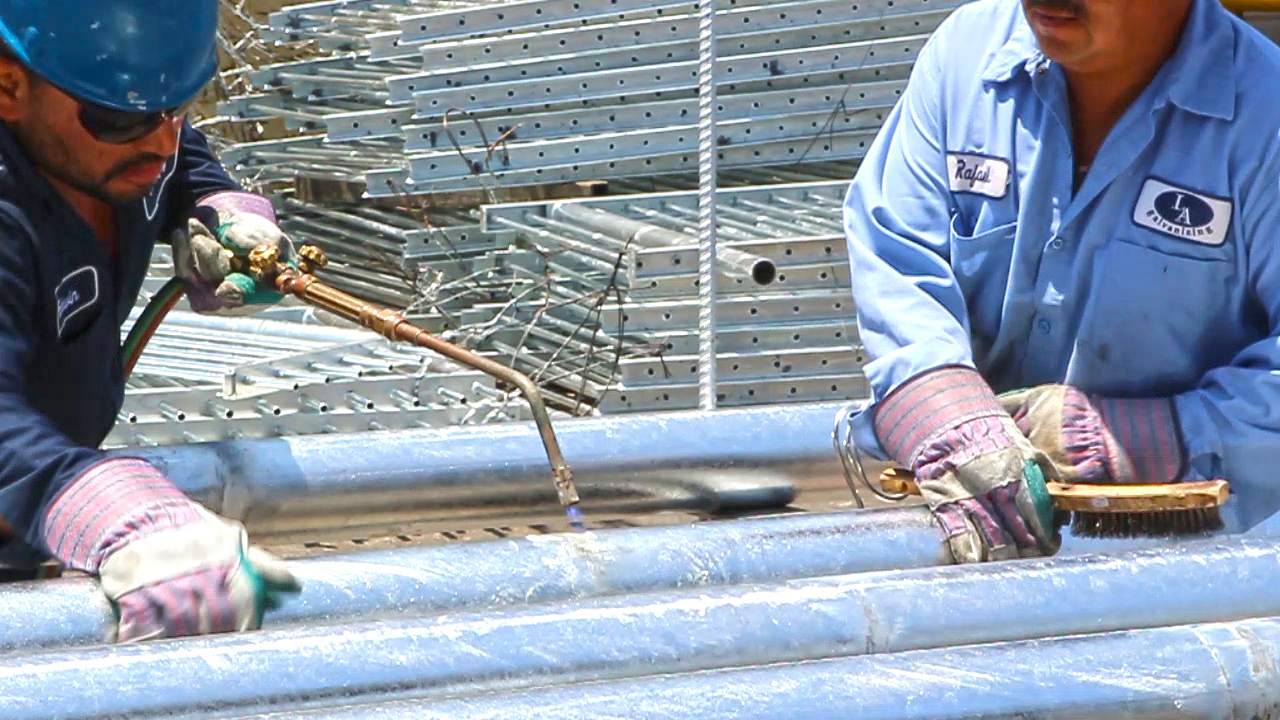The Basics of galvanizing
This will help to appreciate the design considerations, as well as to understand the galvanizing process.
Here are the fundamental steps.
This will help to appreciate the design considerations, as well as to understand the galvanizing process.
A hot alkaline or caustic solution removes dirt, oil, grease and soluble markings.
A dilute solution of hot sulfuric acid removes surface rust and mill scale to provide a chemically clean metallic surface. This pickling process, heated to about 150 ° F, attacks the base steel, getting beneath the rust and scale to achieve the adequate cleaning passes thru into the zinc.
Our “wet” flux is a frothy blanket that floats on the surface of the zinc bath, and is a combination of zinc and ammonium chlorides that clean and protect the previously pickled steel. This flux forms a protective barrier on the steel as it passes thru into the zinc, in addition to removing any oxides that may have formed on the steel’s surface.

This is where the steel actually gets its silver/grey coatings. The article is immersed into a bath of molten zinc heated to about 830 F. During the process, the steel comes up to the bath temperature and the zinc metallurgically bonds to the steel, creating a series of highly abrasion-resistant zinc-iron alloy layers.

Coating thickness and surface condition inspections complete the process to ensure compliance with specification. Electronic gauges are used to give quick and accurate measurement readings of the coating.

“Hot-dip galvanizing is one of the most economical, maintenance-free corrosion protection systems available. Like any other manufacturing process, hot-dip galvanizing requires conformance with established specifications and is inspected to ensure compliance with such specifications.”

Galvanizing is lower in first cost than many other commonly specified protective coatings for steel

Even in cases where the initial cost of galvanizing is higher than alternative coatings, galvanizing is almost invariably cheapest in the long term

The life expectancy of galvanized coatings on typical structural members is in excess of 50 years in most rural environments, and 20 to 25 years plus, even in severe urban and coastal exposure.

Galvanizing is carried out to ASTM A123 and standard, minimum coating thicknesses are applied. Coating life and performance are reliable and predictable.

A galvanized coating has a unique metallurgical structure which gives outstanding resistance to mechanical damage in transport, erection and service.

Galvanized coatings corrode preferentially to steel, providing cathodic or sacrificial protection to small areas of steel exposed through damage. Unlike organic coatings, small damaged areas need no touch up.

Every part of a galvanized article is protected, even recesses, sharp corners and inaccessible areas. No coating applied to a structure or fabrication after completion can provide the same protection.

Galvanized coatings are assessed readily by eye, and simple non-destructive thickness testing methods can be used. The galvanizing process is such that if coatings appear sound and continuous, they are sound and continuous.
With so many benefits why not start galvanizing today